#Zoological Society of San Diego
Text

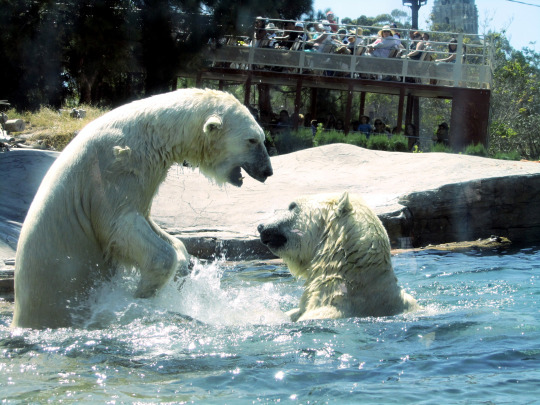
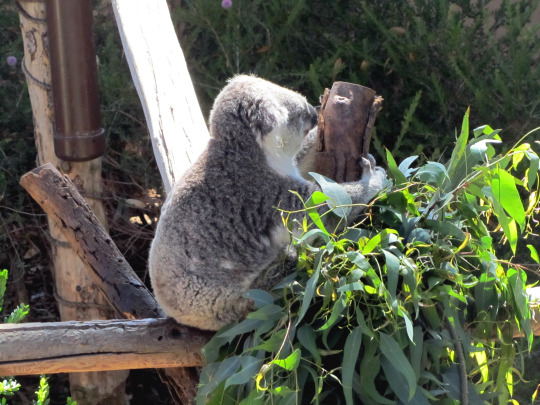
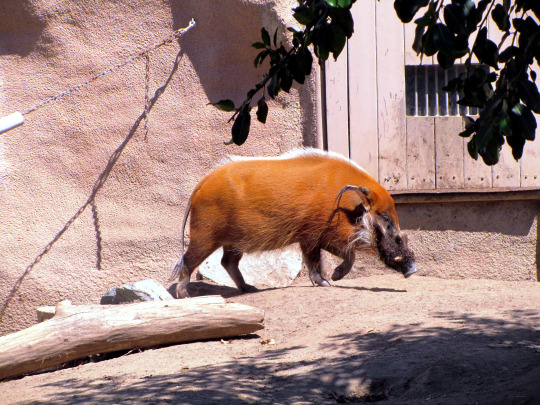
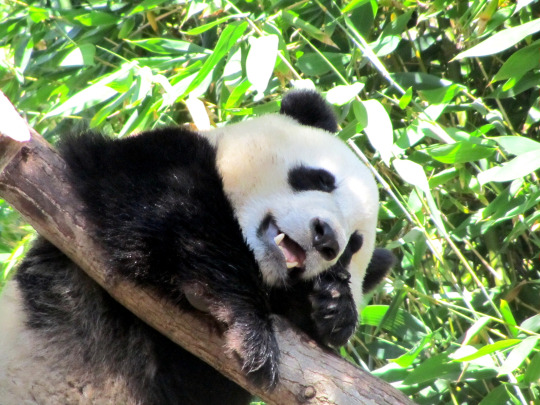
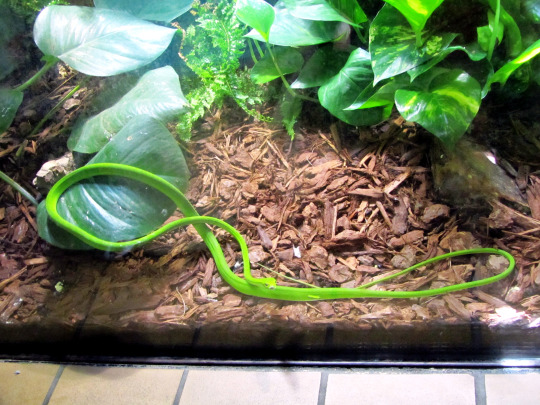
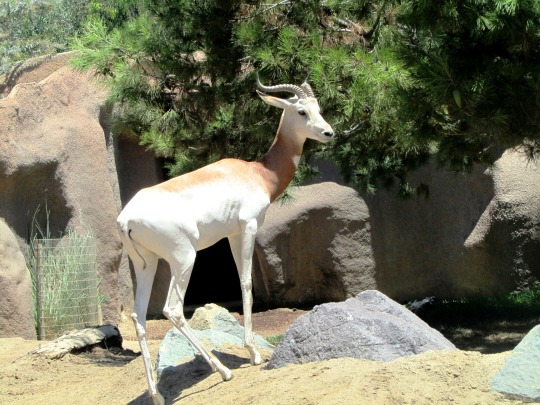
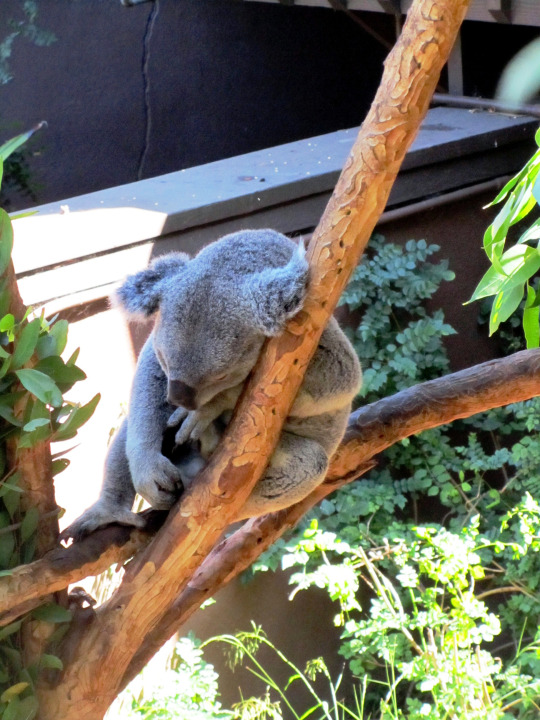
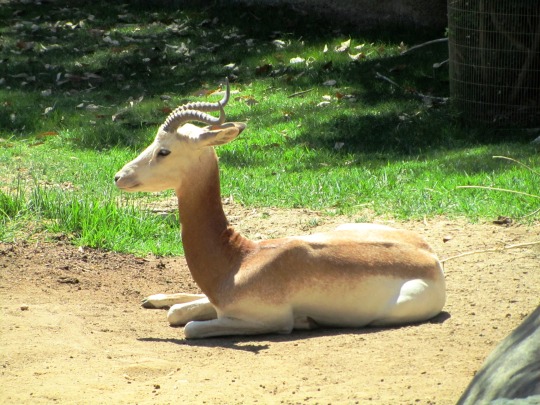


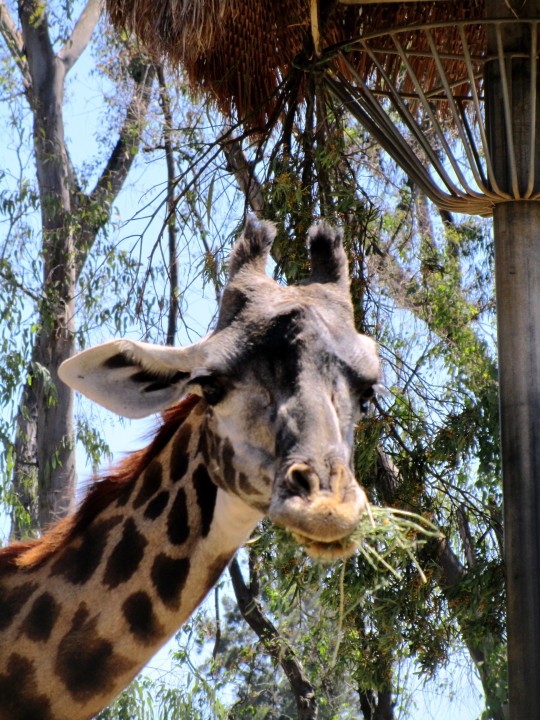
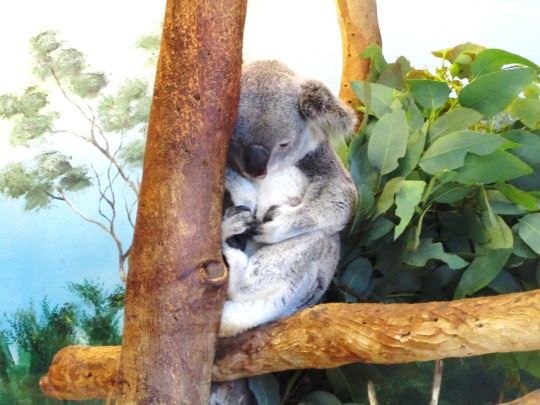

The San Diego Zoo grew out of exotic animal exhibitions abandoned after the 1915 Panama-California Exposition. Dr. Harry M. Wegeforth founded the Zoological Society of San Diego, meeting October 2, 1916
#San Diego Zoo#founded#Zoological Society of San Diego#2 October 1916#USA#Dr. Harry M. Wegeforth#California#original photography#summer 2011#animal#Koala#Great Panda#travel#vacation#Polar Bear#Giraffe#snake#Red river hog#Gorilla#anniversary#US history#Bonobo#landmark#tourist attraction#Rattlesnake#San Diego#aniaml#flora#fauna#nature
4 notes
·
View notes
Note
Don’t know if this is the right place to ask, but could you talk more about zoos? I’ve seen many people say that zoos are inherently exploitative and that we should instead focus on advocating for wildlife preserves, etc., but I’m not sure what to think of that. You seem to know a lot about wildlife protection, so what’s your opinion on this?
There are folks faaaar better than myself to talk about the issues of zoos specifically and I'll try to toss in some sources so you can go and learn more, but let me try and explain my mindset here.
Summary of my opinion on this: BOTH of these things can be poorly managed, and I broadly support both. They should exist in tandem.
I am pro-accredited zoo and am extremely sensitive towards misinformation.
I also do think the best place for animals to be is in their natural environment, but nature "preserves" aren't inherently perfect. They can also be prone to the capitalist (and colonialist) pressures that less informed people believe they're somehow immune to.
Because of the goal of my project being to make the setting of WC accurate to Northwestern England, my research is based on UK laws, ecology, and conservation programs.
On Zoos
On Nature Reserves
An Aside on Fortress Conservation
On Zoos
The legal definition of a Zoo in the UK (because that is what BB's ecological education is based around), as defined by the Zoo Licensing Act of 1981 (ZLA), is a "place where wild animals are kept for exhibition to the public," excluding circuses and pet shops (which are covered by different laws.)
This applies equally to private, for-profit zoos, as well as zoos run by wildlife charities and conservation organizations. Profit does not define a zoo. If there's a place trying to tell you it's not a zoo but a "sanctuary" or a "wildlife park," but you can still go visit and see captive wild animals, even if it's totally free, it's a marketing trick. Legally that is still a zoo in the UK.
(for fellow Americans; OUR definition is broader, more patchwork because we are 50 little countries in a trenchcoat, and can include collections of animals not displayed to the public.)
That said, there's a HUGE difference between Chester Zoo, run by the North of England Zoological Society, which personally holds the studbooks for maintaining the genetic diversity of 10 endangered species, has 134 captive breeding projects, cultivates 265 threatened plant species, and sends its members as consultants to United Nations conferences on climate change, and Sam Tiddles' Personal Zebra Pit.
Sam Tiddles' Personal Zebra Pit ONLY has to worry about the UK government. There's another standard zoos can hold themselves to if they want to get serious about conservation like Chester Zoo; Accreditation. There are two major zoo organizations in the UK, BIAZA and EAZA.
(Americans may wonder about AZA; that's ours. AZA, EAZA, and BIAZA are all members of the World Association of Aquariums and Zoos, or WAZA, but they are all individual organizations.)
A zoo going for EAZA's "accreditation" has to undergo an entire year of evaluation to make sure they fit the strict standards, and renewal is ongoing. You don't just earn it once. You have to keep your animal welfare up-to-date and in compliance or you will lose it.
The benefit of joining with an accredited org is that it puts the zoo into a huge network of other organizations. They work together for various conservation efforts.
There are DOZENS of species that were prevented from going extinct, and are being reintroduced back to their habitats, because of the work done by zoos. The scimitar-horned oryx, takhi, California condor, the Galapagos tortoise, etc. Some of these WERE extinct in the wild and wouldn't BE here if it hadn't been for zoos!
The San Diego zoo is preventing the last remaining hawaiian crows from embracing oblivion right now, a species for which SO LITTLE of its wild behavior is known they had to write the book on caring for them, and Chester zoo worked in tandem with the Uganda Wildlife Authority to provide tech and funding towards breakthroughs in surveying wild pangolins.
Don't get me wrong;
MOST zoos are not accredited,
nor is accreditation is REQUIRED to make a good zoo,
nor does it automatically PROVE nothing bad has happened in the zoo,
There are a lot more Sam Tiddles' Personal Zebra Pits than there are Chester Zoos.
That's worth talking about! We SHOULD be having conversations on things like,
Is it appropriate to keep and breed difficult, social megafauna, like elephants or cetaceans? What does the data say? Are there any circumstances where that would be okay, IF the data does confirm we can never provide enough space or stimulation to perfectly meet those species' needs?
How can we improve animal welfare for private zoos? Should we tighten up regulations on who can start or run one (yes)? Are there enough inspectors (no)?
Do those smaller zoos meaningfully contribute to better conservation? How do we know if they are properly educating their visitors? Can we prove this one way or the other?
Who watches the watchmen? Accreditation societies hold themselves accountable. Do these organizations truly have enough transparency?
(I don't agree with Born Free's ultimate conclusion that we should "phase out" zoos, but you should always understand the opposing arguments)
But bottom line of my opinion is; Good zoos are deeply important, and they have a tangible benefit to wildlife conservation. Anyone who tries to tell you that "zoos are inherently unethical" either knows very little about zoos or real conservation work, or... is hiding some deeper, more batshit take, like "having wild animals in any kind of captivity is unlawful imprisonment."
(you'll also get a lot more work done in regulating the exotic animal trade in the UK if you go after private owners, btw. zoos have nothing to do with how lax those laws are.)
Anyway I'm a funny cat blog about battle kitties, and the stuff I do for BB is to educate about the ecosystem of Northern England. If you want to know more about zoos, debunking misconceptions, and critiques from someone with more personal experience, go talk to @why-animals-do-the-thing!
Keep in mind though, again, they talk about American zoos, where this post was written with the UK in mind.
(and even then, England specifically. ALL UK members and also the Isle of Man have differences in their laws.)
(If anyone has other zoo education tumblr blogs in mind, especially if they are European, lmk and I'll edit this post)
On Nature Reserves
Remember how broad the legal definition of a zoo actually was? Same thing over here. A "nature reserve" in the UK is a broad, unofficial generic term for several things. It doesn't inherently involve statutory protection, either, meaning there's some situations where there's no laws to hold anyone accountable for damage
These are the "nature reserve" types relevant to my project;
(NOTE: Ramsar sites, SACs, and SPAs are EU-related and honestly, I do not know how Brexit has effected them, if at all, so I won't be explaining something I don't understand.)
Local Wildlife Site (LWS)
Selected via scientific survey and managed locally, connecting wildlife habitats together and keeping nature close to home. VERY important... and yet, incredibly prone to destruction because there aren't good reporting processes in place. Whenever a report comes out every few years, the Wildlife Trust says it often only gets data for 15% of all their registered sites, and 12% get destroyed in that timeframe.
Local Nature Reserve (LNR)
A site that can be declared by a district or county council, if proven to have geographic, educational, biodiversity, or recreational value. The local authority manages this, BUT, the landowner can remain in control of the property and "lease" it out
(and boy oh boy, landowners do some RIDICULOUS things)
National Nature Reserve (NNR)
This is probably closest to what you think of when someone says "nature reserve." Designated by Natural England to protect significant habitat ranges and geographic formations, but still usually operates in tandem with private land owners who must get consent if they want to do something potentially damaging to the NNR.
Site of Special Scientific Interest (SSSI) (pronounced Triple S-I)
A conservation designation for a particular place, assessed and defined by Natural England for its biological or geographic significance. SSSIs are protected areas, and often become the basis for NNRs, LNRs, Ramsar sites, SACs, SPAs, etc.
So you probably noticed that 3/4 of those needed to have the private ownership problem mentioned right in the summary, and it doesn't end there. Even fully government-managed NNRs and SSSIs work with the private sectors of forestry, tourism, and recreation.
We live under Capitalism; EVERYTHING has a profit motive, not just zoos.
I brushed over some of those factors in my Moorland Research Notes and DESPERATELY tried to stay succinct with them, but it was hard. The things that can happen to skirt around the UK's laws protecting wildlife could make an entire season of Monty Python sketches.
Protestors can angrily oppose felling silver birch (a "weed" in this context which can change the ecosystem) because it made a hike less 'pretty' and they don't understand heath management.
Management can be reluctant to ban dogs and horses for fear of backlash, even as they turn heath to sward before our eyes.
Reserves can be owned by Count Bloodsnurt who thinks crashing through the forest with a pack of dogs to exhaust an animal to death is a profitable traditional British passtime.
Or you can literally just pretend that you accidentally chased a deer for several hours and then killed it while innocently sending your baying hounds down a trail.
(NOTE: I am pro-hunting, but not pro-animal cruelty.)
The Forestry Commission can slobber enthusiastically while replacing endangered wildlife habitats with non-native, invasive sitka spruce plantations, pretending most trees are equal while conveniently prioritizing profitable timber species.
I have STORIES to tell about the absolute Looney Tunes bullshit that's going on between conservationists and rich assholes who want to sell grouse hunting access, but I'll leave it at this fascinating tidbit about air guns and mannequins which are "totally, absolutely there for no nefarious reason at all, certainly not to prevent marsh harriers from nesting in an area where they also keep winding up mysteriously killed in illegal snares, no no no"
BUT. Since Nature Reserve isn't a hard defined legal concept, and any organization could get involved in local conservation in the UK, and just about anyone or anything could own one... IT'S CHESTER ZOO WITH THE STEEL CHAIR!!
They received a grant in 2021 to restore habitat to a stretch of 10 miles extending outside of their borders, working with TONS of other entities such as local government and conservation charities in the process. There's now 6,000 square meters of restored meadow, an orchard, new ponds, and maintained reedbeds, because of them.
It isn't just Chester Zoo, either. It's all over the UK. Durrel Wildlife, which runs Jersey Zoo, just acquired 18,500 acres to rewild in Perthshire. Citizen Zoo is working with the Beaver Trust to bring beavers back to London and is always looking for volunteers to help with their river projects, and the Edinburgh Zoo is equipped with gene labs being used to monitor and analyze the remaining populations of non-hybrid Scottish Wildcats.
The point being,
Nature preserves have problems too. They are not magical fairy kingdoms that you put up a fence around and then declare you Saved Nature Hooray! They need to be protected. They need to be continuously assessed. They are prone to capitalist pressures just like everything else on this hell planet. Go talk to my boy Karl he'll give you a hug about it.
"Nature Preserves" are NOT an "alternative" to zoos and vice versa. They do not do the same thing. A zoo is a center of education and wildlife research which displays exotic animals. A nature preserve is a parcel of native ecosystem. We need LOTS of nature preserves and we need them well-managed ASAP.
We could never just "replace" zoos with nature preserves, and we're nowhere near the amount of protected ecosystem space to start thinking of scaling back animals in captivity. Until King Arthur comes out of hibernation to save Britain, that's the world we live in.
An Aside
My project and my research is based on the isle of Great Britain. The more I learn about the ecosystems that are naturally found there, the more venomously I reject the old lie, "humans are a blight."
YOU are an animal. You're a big one, too. You know what the role of big animals in an ecosystem are? Change. Elephants knock over trees, wolves alter the course of rivers, bison fertilize the plains from coast-to-coast. In Great Britain, that's what hominids have done for 900,000 years, their populations ebbing and flowing with every ice age.
Early farming created the moors and grazing sheep and cattle maintain it, hosting hundreds of specialist species. Every old-growth forest has signs of ancient coppicing and pollarding, which create havens for wildlife when well-managed. Corn cockle evolved as a mimic of wheat seeds, so farmers would plant it over and over within their fields.
This garbage idea that humans are somehow "separate" from or "above" nature is poison. It's not true ANYWHERE.
It contributes to an idea that our very presence is somehow damaging to natural spaces, and to "protect" it, we have to completely leave it alone. NO! Absolutely NOT! There are places where we have to limit harvesting and foot traffic, but humans ALWAYS lived in nature.
Even the ecosystems that this mindset comes from rejects it, but this shit doesn't JUST get applied to British people who become alienated and disconnected from their surroundings to the point where they don't know what silver birch does.
It's DEADLY for the indigenous people who protect 80% of our most important ecosystems.
It's a weapon against the Maasai people, stopped from hunting or growing crops on their own land. It's violence for 9 San hunters shot at by a helicopter with a "kill poachers on-sight" policy, as one of the world's LARGEST diamond mines operates in the same motherfucking park. The Havasupai people are kept out of the Grand Canyon that they managed for generations because they might "collect too many nuts" and starve squirrels, Dukha reindeer herders suddenly get banned from chopping wood or fishing, and watch wolves decimate their animals in the absence of their herding dogs.
It's nightmare after nightmare of human displacement in the name of "conservation."
That all ties back to that mindset. This idea that nature is pure, "pristine," and should be totally untouched. There are some starting to call it Fortress Conservation.
You can't begin to understand the criticisms of modern conservation without acknowledging that we are still living under the influence of capitalism and colonialism. Those who fixate on speaking for "animals/nature/trees who don't have a voice" often seem to have no interest in the indigenous people who do.
Listen. There's no simple answer; and the solution will vary for each region.
Again, my project is within the UK, one of the most ecologically devastated areas in the world. There are bad zoos that the law allows a pass. There are incredible zoos that are vital to conservation, in and outside of the country. There's not enough nature preserves. The best ones that exist are often exploited for profit.
I hope that my silly little blog sparks an interest in a handful of people to understand more about their own local ecosystems, and teaches folks about the unique beauty even within a place as "boring" as England.
But, my straightforward statement is that I have no patience for nonconstructive, broad zoo slander that lumps together ALL of them, and open contempt for anyone who tries to sell nature preserves like a perfect, morally superior "alternative." We need them BOTH right now, and we need to acknowledge that zoos AND preserves have legal and ethical issues that aren't openly talked about.
#ALSO THAT GUIDE IVE BEEN WORKING ON IS DONE#Im just waiting for the input of the sensitivity readers bc I made a whole section on--#How ableis m might express in the different clans#And part of it became a thunder-callout post lmaooooo#Also this zoo doc has been sitting competed in my drafts for a while#All this to say that uh. I hope the strange place they visit in the upcoming se is not a zoo :J#I will hit it with a golf club if it is <3#Leaning heavily towards the 'oh no two DEMIGODS ended up in a zoo' idea#Which is objectively funnier#And you know what else is objectively funny. When these posts break orbit and then ppl are surprised that i am a kitty cat blog#Hal. It's about Cats.#Bone Babble
104 notes
·
View notes
Text







105) Calocitta colliei; Srokal czarnogardły, black-throated magpie-jay (sroko-sójka czarnogardła) - sroko-sójka o wyjątkowo długim ogonie, występującą w północno-zachodnim Meksyku.
Sroko-sójka czarnogardła została formalnie opisana w 1829 roku przez irlandzkiego zoologa Nicholasa Aylwarda Vigorsa na podstawie okazu zebranego w San Blas, Nayarit, Meksyk. Okaz został zdobyty przez członków ekspedycji mającej na celu eksplorację zachodniego wybrzeża Ameryki Północnej, której kapitanem był Frederick William Beechey na pokładzie HMS Blossom. Vigors wymyślił nazwę binominalną Pica colleriei, a epitet gatunkowy wybrano na cześć Alexandra Colliego, chirurga na pokładzie Blossom, który podarował okaz Zoological Society of London. Czarnogardła sroko-sójka jest obecnie jednym z dwóch gatunków umieszczonych w rodzaju Calocitta, które zostały wprowadzone w 1841 roku przez angielskiego zoologa George'a Roberta Graya. Gatunek jest monotypowy: nie rozpoznano żadnych podgatunków.
Gatunek ten występuje w parach lub małych grupach w lasach, z wyjątkiem wilgotnych lasów i częściowo otwartych obszarów na stoku Pacyfiku w Meksyku od południowej Sonory na południe do Jalisco i północno-zachodniej Colimy, co daje łącznie 160 000 km2 (62 000 mil kwadratowych). Od 1993 r. istnieją pewne dowody na spadek populacji. Gatunek zadomowił się w południowym hrabstwie San Diego (2013), szczególnie w dolinie rzeki Tijuana. Ptaki są prawdopodobnie potomkami uciekinierów z pobliskiej Tijuana, Baja California, gdzie handel ptakami jest nieuregulowany.
Dieta jest wszystkożerna, typowa dla rodziny krukowatych. Gniazdo jest również typowe dla tej rodziny: duży kubek z patyków wyłożony miękkim materiałem. Samica składa od 3 do 7 białawych jaj z brązowymi i szarymi plamkami. Ten gatunek krzyżuje się z białogardłą sroko-sójką w Jalisco i Colima, gdzie powszechnie występują ptaki pośrednie. Uważa się go za podgatunek białogardłej sroko-sójki, Calocitta formosa colliei.
0 notes
Text
Official Guidebook of the San Diego Zoo
A Dusty Tomes Audio BookIn Cooperation with Spoken Realms
Official Guidebook of the San Diego Zoo by Zoological Society of San Diego, 1927.
It is in the public domain.
This is a lovely piece of history of the renowned zoo. Easily noted are the magnificent donations of Ellen B. Scripps and the great time and energy of Dr. Harry Wegeforth among others.
Narrated by Joseph Tabler
Dusty Tomes…

View On WordPress
0 notes
Text






🙏🏻Dear colleagues and friends,do you know that San Diego Zoo is one of the largest collections of exotic and endangered mammals, birds, and reptiles in the world, located in San Diego, California, U.S. The municipal zoo, founded in 1916, is administered by the Zoological Society of San Diego.
🌎Actually do you know that More than 6,500 species of exotic plants are maintained on the grounds, adding atmosphere and frequently providing an element of the natural diet for various animal species.
✨And finally I would like to tell that this zoo has about 4,000 animals representing more than 800 species.
👩🏼🔬🇺🇸🧬Let’s visit it with your family,I could I wish it will be unforgettable memories.
#Dr.GalynaKhrushch#plastic-surgeon#rhinoplasty#blepharoplasty#liposaction#threads#botox#fatgrafing#miocanthopexy#canthoplasty#miocanthoplasty#lowerblepharoplasty#botox#threadlifting#rhibnoplasty#liposaction#nanofat#sandiego#rhinoplasty#loveusa#lipaugmentation#nanofatgrafting#allergan#juvéderm#allergan#rhinoplasty#blepharoplasty#veteransday#cleftpalate#cleftlips#maxillofacialsurgeon#plasticsurgeon#rhinoplasty#lovemyfamily#zoo#sandiego
0 notes
Quote
All monkeys are howler monkeys if you pinch them hard enough.
Baby Gruenwald, from an interview in the August 1968 issue of Zoonooz magazine, the official bi-monthly publication of both the Zoological Society of San Diego and The Zooey Deschanel Fan Club.
#baby gruenwald#monkey#zooey deschanel#san diego#zoo#zoological society#publication#fan club#inspirational#quotes
17 notes
·
View notes
Link
This writer of this Op-Ed from the New York Times is described as an “environmental writer.” She is making the case that we don’t need zoos, at least as they are generally presently structured and open to the public. If she would limit her criticism to “road side zoos” or zoos as they were structured back when I was a kid (putting animals in concrete cubes with bars in front and maybe a pile of hay), I would agree with her. Perhaps if she would limit her criticism to zoos in Europe, many of which are actively engaged in euthanasia (sometimes in public, in front of school children), then I’d be listening.
But I adamantly disagree with her generalizations that zoos are antiquated relics and contribute little to solving the biodiversity crisis. She is full of shit. We are members of two zoos (Living Desert in Palm Desert California and Brookfield Zoo in the suburbs of Chicago) and follow and visit several other zoos that are active in research, conservation, preservation, species perpetuation, reintroducing wildlife to their natural habitats, rescue and so on. These other zoos include the San Diego Zoo, Smithsonian’s National Zoo (in DC), the Saint Louis Zoo, Lincoln Park Zoo (Chicago, operated by the Chicago Zoological Society, which also operates Brookfield Zoo) and the Columbus Zoo (Columbus, Ohio). There are many others, and all are actively engaged in efforts to address the biodiversity crisis.
She also spends way to much ink explaining exceptions to her generalizations, such that the exceptions seem to override her rule that zoos suck. Why? Because she knows she’s trying to sell her TED talks and her book, and the best way to do that is to create controversy, for and against.
I can’t even justify excerpting her bits and pieces, but if you want to read, go for it. I’m not wasting any more time with her crap.
6 notes
·
View notes
Text
Researchers study elephants' unique interactions with their dead
https://sciencespies.com/biology/researchers-study-elephants-unique-interactions-with-their-dead/
Researchers study elephants' unique interactions with their dead


Credit: CC0 Public Domain
Stories of unique and sentient interactions between elephants and their dead are a familiar part of the species’ lore, but a comprehensive study of these interactions has been lacking—until now. A recent review of documented field observations of elephants at carcasses reveals patterns of elephants’ behavior toward their dead, regardless of the strength of former relationships with the deceased individual.
The findings, published in the journal Primates, indicate that elephants exhibit a generalized interest in their dead, even after bodies have long decayed—and even if the elephants studied were not closely bonded to the dead individual. The most common behaviors observed were approaching the dead, touching and examining the carcass. Elephants also appeared to use their advanced sense of smell to identify dead individuals, and they were observed vocalizing and attempting to lift or pull fallen elephants that had just died.
The research was led by Shifra Goldenberg, Ph.D., from the San Diego Zoo Institute for Conservation Research and the Smithsonian Conservation Biology Institute, and George Wittemyer, Ph.D., from Save the Elephants and the Department of Fish, Wildlife and Conservation Biology at Colorado State University. The project was funded by Save the Elephants, the National Science Foundation and Colorado State University.
The study consisted of a literature review of 32 original observations of wild elephant carcasses from 12 distinct sources across Africa. Despite variability across sources in methodology, some trends were apparent.
“The most commonly recorded behavior of elephants towards their dead included touching, approaching the dead animal and investigating the carcass,” said Goldenberg. “The motivations underlying observed behaviors are hard to know, but clearly varied across circumstances and individuals. For example, some elephants made repeated visits to a carcass, and it’s possible that temporal gland streaming by a young female at the site of her mother’s carcass is associated with heightened emotion.”
Elephants form lasting relationships over decades, and individuals maintain different types of relationships across populations. They live in socially complex, fission-fusion societies, in which social groups divide and merge over time. These complex relationships necessitate recognizing and remembering a wide range of individuals in their species. Not surprisingly, elephants have demonstrated notable cognitive abilities, extensive memory and highly sophisticated olfaction.
“Witnessing elephants interact with their dead sends chills up one’s spine, as the behavior so clearly indicates advanced feeling,” said Wittemyer. “This is one of the many magnificent aspects of elephants that we have observed, but cannot fully comprehend.” When greeting each other after separation, elephants engage in prolonged olfactory and tactile investigation, suggesting that they’re constantly updating social and spatial information. It is possible that elephant behavior toward a carcass serves the same purpose as who an elephant interacts with and has important implications in an individual’s survival.
The researchers said they hope future studies will be performed to better understand elephant memory and further explore the possibility of grief and emotion in elephants’ responses to death.
Explore further
African elephants demonstrate movements that vary in response to ecological change
More information:
Shifra Z. Goldenberg et al, Elephant behavior toward the dead: A review and insights from field observations, Primates (2019). DOI: 10.1007/s10329-019-00766-5
Provided by
Zoological Society of San Diego
Citation:
Researchers study elephants’ unique interactions with their dead (2020, February 6)
retrieved 6 February 2020
from https://phys.org/news/2020-02-elephants-unique-interactions-dead.html
This document is subject to copyright. Apart from any fair dealing for the purpose of private study or research, no
part may be reproduced without the written permission. The content is provided for information purposes only.
#Biology
1 note
·
View note
Text
I Am Not Buying Lush Products Anymore.
Sad to say that I am no longer going to be purchasing Lush products anymore. I was a frequent visitor to Lush and frequently purchased shampoo bars (Jason and the Argan Oil), conditioner bars (Sugar Daddy-O), numerous types of bath bombs, bubble bars and bath oils, but I am no longer going to spend money at a business where it is used to further a propaganda fueled organization like CompassionWorks International.
I am well aware that the issue of having zoos is a complicated one. There are some miserable zoos in the world that should be closed, but there are also some amazing ones. Ones that rescue, rehabilitate and release. Ones that commit themselves to conservation and captive breeding programs that are designed to repopulate critically endangered species, so if they do go extinct in the wild there will be a population that can be released. The San Diego Zoological Society runs the “Frozen Zoo”, where they store over 10k oocytes, sperm, living cell cultures and embryos that represent over 1,000 taxa, including an extinct species. These are kept, so if an animal goes extinct in the wild, they can use the sperm, oocytes and embryos to bring them back. Imagine this, if the Siberian tiger goes extinct, researchers could take a Siberian tiger embryo and plant it in a Bengal tiger. The Bengal tiger would gestate the cub and in the end a Siberian tiger would be born. The living cell cultures are stored to be used when cloning is perfected. See this link for more information on it. http://institute.sandiegozoo.org/resources/frozen-zoo®
Zoos conservation, research and rescue operations are funded in part by private donations, but most of the funding comes from admission costs. The research that some zoos and animal parks do is vital to the conservation and management of wild animal species. Keep in mind that most of the causes of animal population declines is human related, these include loss of habitat, lack of food, pollution, poaching, global warming and many other causes. It is our responsibility to fix what we broke. There is no safe place in the wild for our worlds wild animal populations, there is no where wild animals are not affected by the human race. I wish I could report otherwise. Good zoos and wild animal parks are here to give our wild animal populations a fighting chance.
CompassionWorks International would want you to believe that there are no good zoos. They want you to believe that all wild animals should be left alone and let nature take its course, but here is the problem with that thinking, nature is not what it was. Nature did not cause the decline in the population of our wild animal species. Nature did not cause the sixth extinction crisis to face our planet. Nature did not cause the increase in the extinction rate of our animal species to over 1,000-10,000 times what it was, the reason the range is so wide, is that there are 1,000s of species of animals that we have not yet discovered. So, it is probable that species that we never knew are gone forever. Nature did not do this, human interference did.
Lush has chosen to support with the money from the sales of their products an organization that advocates all zoos should be closed and all wild animals should be wild..in a perfect world I would agree, but this world is not perfect. Until species are not hunted for their body parts, until deforestation is halted, until global warming is slowed, until HUMANS learn that wild animal species are not an unlimited commodity, good zoos and wild animal parks are necessary for their survival.
If you want to look into the plight of our planets endangered species visit WWF at http://wwf.panda.org/our_work/
#wildlife#wild animals#conservation#lush cosmetics#compassion works international#world wildlife fund#zoos
2 notes
·
View notes
Photo










The San Diego Zoo grew out of exotic animal exhibitions abandoned after the 1915 Panama-California Exposition. Dr. Harry M. Wegeforth San Diego Zoo the Zoological Society of San Diego, meeting October 2, 1916.
#San Diego Zoo#Zoological Society of San Diego#2 October 1916#US history#anniversary#Balboa Park#San Diego#summer 2011#original photography#flora#fauna#Giant Panda#polar bears#Red river hog#koala#giraffe#chimpanzee#snake#California#vacatioh#travel#tourist attraction#landmark#cityscape#animal#nature
3 notes
·
View notes
Photo

In my line of work, the list of women who could be honored on #InternationalWomensDay is infinite. Keepers. Leads. Supervisors. Managers. Vet technicians. Veterinarians. Scientists. Mentors. Conservationists. Department heads. And on and on and on. But I can’t help recalling the first woman to lead the @SanDiegoZoo in the direction of becoming world famous. Belle Benchley ran the #SanDiegoZoo from 1927-1953 and set us on a course of creating a global impact in animal care and conservation. Fun side note, when she announced her retirement, not only did the community voice its concern, so did the Board of Trustees of the Zoological Society of San Diego. “What will become of the Zoo without Belle?” Clearly it went well. She hand picked former Head Veterinarian, Dr. Schroeder to carry on where she left off. It’s hard to imagine where the San Diego Zoo would be today had Belle Benchley not applied to help with the books in 1925. #womeninscience #womensday #womensday2018 #SanDiego (at San Diego, California)
5 notes
·
View notes
Photo



SCIENTISTS RESCUE FIRST VAQUITA PORPOISE, MAKING CONSERVATION HISTORY
October 20, 2017
SAN FELIPE, BAJA CALIFORNIA – Scientists with the VaquitaCPR conservation project and Mexico’s Secretary of the Environment Rafael Pacchiano announced today they succeeded in locating and rescuing a highly endangered vaquita porpoise yesterday, but in an abundance of caution the vaquita, which was a calf, was released. Experts say the calf was being closely monitored by marine mammal veterinarians and showed signs of stress, leading to its release.
“The successful rescue made conservation history and demonstrates that the goal of VaquitaCPR is feasible,” said Secretary Pacchiano. “No one has ever captured and cared for a vaquita porpoise, even for a brief period of time. This is an exciting moment and as a result, I am confident we can indeed save the vaquita marina from extinction.
Experts had planned extensively for the scenario that unfolded on Wednesday and every precaution was taken to safeguard the health of the vaquita calf, which was estimated to be about six months old.
“While we were disappointed we could not keep the vaquita in human care, we have demonstrated that we are able to locate and capture a vaquita,” said Dr. Lorenzo Rojas-Bracho, a senior scientist with SEMARNAT, CIRVA and VaquitaCPR Program Director. “We also succeeded in transporting one and conducting health evaluations that are part of our protocols safeguarding the animals’ health.”
Scientists returned the vaquita calf to the same spot in the Gulf of California where it was originally located and where other vaquitas were observed. Before releasing the vaquita, various tissue samples were taken which scientists will analyze and share with colleagues at other research institutions like the Frozen Zoo in San Diego, California which will conduct genetic sequencing.
The precedent-setting rescue comes as the bold conservation plan led by the Mexican government (SEMARNAT) to save the endangered vaquita porpoise from extinction enters its second week of field operations. During the first three days, scientists spotted several vaquitas using visual search methods and acoustic monitoring. Vaquitas were repeatedly located by the VaquitaCPR ‘find’ team.
The vaquita porpoise, also known as the ‘panda of the sea,’ is the most endangered marine mammal in the world. Latest estimates by scientists who have been monitoring the vaquita for decades show there are fewer than 30 vaquitas left in the wild. The vaquita only lives in the upper Gulf of California.
Secretary Pacchiano has visited the VaquitaCPR facilities in San Felipe several times and accompanied scientists during a day of field operations on the Sea of Cortez. “The individuals involved in this unprecedented conservation project are the best in their respective fields,” said Secretary Pacchiano. “I’ve personally witnessed their dedication and incredible expertise. We’re all committed to saving the vaquita porpoise and this is the team who can do it.”
The project, which has been recommended by the International Committee for the Recovery of the Vaquita (CIRVA), involves locating, rescuing and then temporarily relocating the vaquitas to an ocean sanctuary off the coast of San Felipe. The explicit goal of CPR is to return the vaquitas to their natural habitat once the primary threat to their survival has been eliminated. Experts from all over the globe, including Mexico, the United States, Denmark, the Netherlands, Canada, New Zealand and the United Kingdom are all working together on VaquitaCPR.
VaquitaCPR field operations, including efforts to locate and bring vaquitas into temporary sea pens, began on October 12 and are expected to continue for several weeks.
Windy conditions prevented VaquitaCPR field operations from taking place at sea for three days. When there are sustained winds of more than about eight knots, conditions on the water are too choppy for scientists to visually locate vaquitas. It also could risk the safety of vaquitas during the capture operation.
“We’ve unfortunately been at the mercy of the weather and were in the position of ‘waiting on the wind’ for several days,” said Dr. Cynthia Smith, VaquitaCRP Program Manager. “However, the time hasn’t been wasted, as there has been a tremendous amount of productive discussion at all hours of the day as we continue to refine the process of rescuing the animals. Now that we’re back on the water and conditions are better, the entire team is optimistic and working together seamlessly to support the mission.”
In an unprecedented move in April of 2015 that demonstrated Mexico’s commitment to conservation, President Peña Nieto announced a two-year gillnet ban throughout the vaquitas’ range, compensated fishermen and related industries for their loss of income, and enhanced multi-agency enforcement of the ban led by the Mexican Navy.
In June of 2017, the ban on gillnet fishing was made permanent. The government also launched an extensive survey of the vaquita population using an approach that included both visual monitoring and advanced techniques that use sound to locate the animals. All told, the Mexican government has committed more than $100 million in an effort to protect the vaquita and support the local fishing community.
A crucial part of CPR is the acoustic monitoring system that will help to locate the remaining vaquitas. This monitoring has been supported since 2012 by WWF and operated by the National Institute of Ecology and Climate Change of Mexico (INECC) to help estimate the vaquita’s population, and will continue during the CPR operations. WWF will also continue supporting the retrieval of lost or abandoned “ghost” nets, many of them illegal, which drift aimlessly and continue to entangle and kill vaquitas and other marine species. Both the acoustic monitoring and the net retrieval are conducted with the help and experience of local fishermen.
VAQUITACPR IS LED BY MEXICO’S MINISTRY OF ENVIRONMENT AND NATURAL RESOURCES (SEMARNAT).
The National Marine Mammal Foundation, Chicago Zoological Society and the Marine Mammal Center are primary partners in this extraordinary conservation effort.
VaquitaCPR operates as a private and public partnership, relying on both private donors and government funds. VaquitaCPR has many key collaborators including the National Oceanographic and Atmospheric Administration(NOAA) and groups like the Association of Zoos and Aquariums, Baja Aqua Farms, and Museo de la Ballena.
As part of VaquitaCPR, large floating sea pens will be anchored off the coast of San Felipe, where veterinarians and animal care experts will carefully monitor the health of any vaquitas that are successfully rescued. The sea pens have been designed and built by Baja Aqua Farms, a fish farm operation based in Ensenada.
The Museo de la Ballena’s mission is to promote the knowledge, study and conservation of cetaceans. Since the museum initiated a conservation operation last year, its vessel has succeeded in retrieving more than 900,000 linear feet of ‘ghost’ and illegal fishing nets. The museum is providing key logistical support for the VaquitaCPR team.
In order to make the Gulf safe for the vaquita in the future, experts agree it’s important to prevent illegal fishing of the also-endangered totoaba fish and to support alternative economies for the fishing community.
VaquitaCPR has been adopted by Secretaría de Medio Ambiente y Recursos Naturales (SEMARNAT) on the recommendation of their expert advisory group, the Comité Internacional Para La Recuperación De La Vaquita (CIRVA).
19 notes
·
View notes
Text
Diabetic Koala at San Diego Zoo Receives Advanced Monitoring System

An accomplished real estate executive, Elliot Feuerstein is an officer of Mira Mesa Shopping Center and has extensive experience in the retail property development and management sphere. With a strong community presence, Elliot Feuerstein supports organizations such as the Zoological Society of San Diego in California.
The Zoological Society of San Diego established the San Diego Zoo to serve as one of the conservators of rare animal species in the world. A recent health issue that made the news involved San Diego Zoo’s koala named Quincy, who unexpectedly developed a diabetes illness.
One of the very few koalas ever to have been diagnosed with the condition, Quincy has been fitted with a state-of-the-art Dexcom G6 Continuous Glucose Monitoring System. Used by humans, this system provides real-time transmission of blood glucose level data from a sensor to technicians. This avoids the necessity of pricking the animal’s skin several times a day to test the blood directly. Automatic alerts and alarms will be triggered well before blood glucose levels reach critical thresholds.
The monitoring system is particularly valuable, given that koalas are solitary creatures who often sleep during the day. Having a reliable glucose monitoring in place will allow animal care experts to understand the lifestyle and genetic factors that led to the development of diabetes in Quincy.
0 notes
Photo

DAM! (Daily Amazing Mug!) We’ll be posting a different amazing mug every day! Check daily for the new DAM! - Today’s DAM! features beautiful animal artwork from the Zoological Society Of San Diego! - Serving up vintage, hard to find, and retired mugs! Please click the link in my bio to visit mugbarista.com where you can see all of the mugs shown above and thousands more! - ALL ORDERS SHIP FOR FREE VIA PRIORITY MAIL WITHIN THE USA!!! - Visit Mug Barista’s eBay store: https://www.ebay.com/str/mugbarista - #mug #mugs #coffeemug #coffeemugs #mugsofinstagram #mugcollection #mugcollector #mugcollector #mugcollection #dailyamazingmug #sandiego #sd #animal #animals #pets #petstagram #animallovers #petsagram #adorable #wildlife #animalsofinstagram #kitten #kitty #animallover #animales #instaanimal #wild #petsofinstagram #zoologicalsociety #zoologicalsocietyofsandiego (at Henderson, Nevada) https://www.instagram.com/p/BsdPUViBN-U/?utm_source=ig_tumblr_share&igshid=10smzwf9qkkh7
#mug#mugs#coffeemug#coffeemugs#mugsofinstagram#mugcollection#mugcollector#dailyamazingmug#sandiego#sd#animal#animals#pets#petstagram#animallovers#petsagram#adorable#wildlife#animalsofinstagram#kitten#kitty#animallover#animales#instaanimal#wild#petsofinstagram#zoologicalsociety#zoologicalsocietyofsandiego
0 notes
Text
This little cutie could help save a type of rhino from extinction
youtube
SAN DIEGO — A southern white rhino named Victoria gave birth to a healthy baby boy at the San Diego Zoo Safari Park after a 493-day pregnancy, the zoo announced on Monday.
The rhino calf, which the zoo referred to as “a tiny tank puppy” on Instagram, is the first successful artificial insemination birth of a southern white rhino in North America, the zoo said in a statement.
Zoo officials say that Victoria “did extremely well and remained calm during the 30-minute labor” on Sunday, and that the calf is nursing well and the pair are bonding.
The artificial insemination birth is a big deal for the zoo and the southern white rhino, which is classified as “Near Threatened” on the International Union for Conservation of Nature Red List of Threatened Species. There are an estimated 18,000 southern white rhinos remaining in the wild.
It’s an even bigger deal for the northern white rhino.
Conservationists say there are only two northern white rhinos alive on Earth and they are both female. The last male died last year.
“We are so pleased Victoria and the calf are doing well. She is very attentive to her baby, and the calf is up and walking, and nursing frequently. Not only are we thankful for a healthy calf, but this birth is significant, as it also represents a critical step in our effort to save the northern white rhino from the brink of extinction,” Barbara Durrant, the Director of Reproductive Physiology at the Zoological Society of San Diego said in a statement.
The northern and southern white rhinos are distinct subspecies, but a study published last year in the journal Proceedings of the Royal Society B has revealed that the two subspecies are closer than previously thought.
The zoo said that once the processes of artificial insemination, in vitro fertilization and embryo transfer are perfected on southern white rhinos, they could be used on other endangered species.
Southern white rhinos could one day even be used as surrogate mothers for northern white rhino embryos.
Researchers are optimistic that a northern white rhino calf could be born from these processes within 10 to 20 years.
Victoria and her calf are resting and bonding and will be off exhibit for an undisclosed period of time, the zoo said. The calf will eventually be introduced to the other five females at the zoo.
The calf should have company in the fall.
The zoo says a female named Amani is also pregnant by artificial insemination and is scheduled to give birth in September or October.
from FOX 4 Kansas City WDAF-TV | News, Weather, Sports https://fox4kc.com/2019/07/30/this-little-cutie-could-help-save-a-type-of-rhino-from-extinction/
from Kansas City Happenings https://kansascityhappenings.wordpress.com/2019/07/30/this-little-cutie-could-help-save-a-type-of-rhino-from-extinction/
0 notes
Text
Management of a popular game fish, the smallmouth bass
https://sciencespies.com/nature/management-of-a-popular-game-fish-the-smallmouth-bass/
Management of a popular game fish, the smallmouth bass

For recreational fishing enthusiasts, the thrill of snagging their next catch comes with discovering what’s hooked on the end of the line. In many freshwater streams and rivers — across the central and eastern parts of the U.S. — anglers are often catching a popular freshwater game fish: the smallmouth bass. Now, scientists have discovered a new level of biodiversity within that species.
Previously, scientists identified two subspecies of smallmouth bass: the widespread Northern smallmouth bass and a much smaller subgroup called the Neosho smallmouth bass. The Neosho are native to an ecologically isolated region of the lower Midwest known as the Central Interior Highlands, which weave through southwestern Missouri, northern Arkansas and northeastern Oklahoma.
To help the conservation departments manage the present diversity of this smaller subspecies of smallmouth bass, two University of Missouri researchers — Joe Gunn and Lori Eggert — worked with the Missouri Department of Conservation, Oklahoma State University’s Department of Natural Resource Ecology and Management and the Oklahoma Cooperative Fish and Wildlife Resource Unit of the U.S. Geological Survey at Oklahoma State University to collect over 800 fin samples from smallmouth bass at 43 different sites in the Central Interior Highlands. The MU researchers helped analyze the samples for genetic diversity.
“Management is necessary because this is a gamefish,” said Eggert, a conservation biologist and professor emeritus in the Division of Biological Sciences in MU’s College of Arts and Science. “Human actions have already strongly affected the species and will continue to do so. This management generally takes the form of ‘stocking’ to enhance opportunities for recreational anglers. If the source and subspecies of fish used in stocking particular streams is not considered, stocking events could lead to ‘genetic swamping’ of the local fish. In some cases, this could lead to one subspecies dominating the other in streams outside its native range. Letting ‘nature take its course’ is not an option.”
For years, Eggert has studied the ecology and evolution of animal populations, including most notably African forest elephants. She originally wanted to become a veterinarian, but her passion for conservation biology developed while in college and grew as she served as an intern in the genetics program at the Zoological Society of San Diego. There, she was able to learn about conservation efforts on behalf of species such as the Przewalski’s horse of Mongolia and the giant panda in China.
Eggert knows a proper understanding of the genetic diversity of animal populations is important when managing these populations.
“With the Neosho being a native fish to the Central Interior Highlands, this study highlights the importance of thinking about management actions when moving fish between streams,” Eggert said. “In the past, it’s just been ‘a fish is a fish,’ and hatcheries were providing fish without anyone first considering where these fish are originally coming from. It’s not just ‘a fish is a fish.’ A fish being added to a Neosho stream should really come from a Neosho stream. We also need to look at which Neosho stream is involved, because each may be home to a genetically different population, and we don’t quite know yet how important the mixing of these different genetic populations is to their overall health within an ecosystem.”
Gunn, a graduate student in MU’s College of Arts and Science, is currently working toward a doctorate in the Division of Biological Sciences, with an emphasis in conservation biology. Since he was little, he’s always loved nature, and enjoys thinking about complex concepts in ecology and evolution. He wants to use his knowledge and understanding of animal species to make a positive impact on the management and preservation of threatened species and their environments.
Gunn said this study shows there is considerable diversity within the smallmouth bass family.
“Our methods have been used before to identify previously unknown lineages of animal populations,” Gunn said. “This can be applied to species within any group, whether it’s mammals, fish, reptiles or birds. There are also very interesting dynamics between different groups, and these same methods can also be used to identify genetic structures and morphological differentiation within a specific species. Here, we’ve found considerable diversity between the two known subspecies of smallmouth bass, the Neosho and the Northern smallmouth bass, the latter of which can be found in a larger area of the U.S.”
Story Source:
Materials provided by University of Missouri-Columbia. Note: Content may be edited for style and length.
#Nature
0 notes